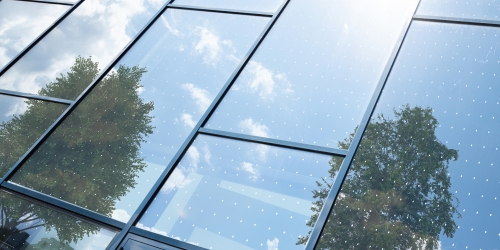Two national technical authorities recognize the strength and design flexibility of Saflex™ Structural PVB interlayers for laminated glass.
Eastman Saflex™, a leading provider of stiff PVB interlayers for glass applications, shared its latest achievement with approvals for Saflex Structural PVB interlayer from two national authorities, German Deutsches Institut für Bautechnik (DIBt) and allgemeine Bauartgenehmigung (aBG), and the French Centre Scientifique et Technique du Bâtiment, CSTB, (Document Technique d’Application (DTA)).
Saflex Structural PVB interlayer was the first stiff PVB to be approved in Germany back in 2016. Since that time, Saflex Structural PVB interlayer properties were further confirmed in extensive research conducted at the TU Darmstadt and the University of the German Armed Forces from 2017 to 2019. The values from this work have now been accepted by the DIBt as design values and included in the current aBG even when the product remained unchanged in the past decade.
In France, Saflex PVB Structural interlayer was rigorously tested by the Scientific and Technical Center for Buildings (CSTB) and evaluated by the relevant expert group, resulting in the publication of a French DTA, making Saflex Structural PVB interlayer the first and only stiff PVB interlayer approved so far for general use in France.
The revised German approval allows for a better set of modulus values, particularly for wind and snow loads, enabling engineers and specifiers to design with greater accuracy and efficiency. The most significant increase in modulus values for wind loads, from 2 to 10 MPa, provides specifiers with unparalleled convenience and flexibility. Additionally, the revised approval also includes increased values for snow loads (from 20 to 130 MPa) and live loads based on temperature, making it relevant for balustrade designs.
By incorporating Saflex Structural PVB interlayer properties into their designs, architects and engineers can use thinner glass configurations without compromising on safety. This not only can reduce the carbon footprint associated with glazing but also offers cost savings. In certain cases, the weight reduction of the glass may even enable a reduction in the required support construction, further contributing to the overall sustainability of the building.
"We are thrilled to receive the aBG approval from the German DIBt and DTA approval from France," said Oliver Osborne, commercial director of AMI architecture with Eastman. "We hope this will empower architects and engineers to create more sustainable and cost-effective designs, while maintaining the highest standards of safety and performance."
Saflex Structural PVB interlayer is a durable film made from plasticized polyvinyl butyral. It is designed for use in structural glazing and provides excellent structural strength, uniform load capacity, interlayer stiffness and strong adhesion to glass. This makes it well-suited for larger glass installations and structural applications such as railings, glass fins and glass floors. This Saflex interlayer is capable of maintaining the integrity of glass even in extreme temperatures, as well as after impact and when subjected to heavy loads.










